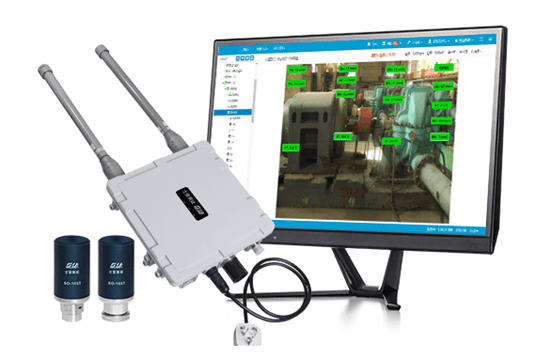What are the modern applications and future prospects of vibration monitoring systems?
In today's rapidly advancing technology, vibration monitoring systems are playing an increasingly important role in many fields due to their unique advantages. The system is capable of real-time monitoring of the vibration status of equipment or structures, providing accurate data support for predictive maintenance, fault diagnosis, and safety assessment. This article will introduce the modern application and future development trends of vibration monitoring systems in detail by Shanghai Shiyi.
1、 Modern Application of Vibration Monitoring System
Industrial equipment monitoring: In industrial production, many key equipment such as compressors, pumps, and motors, once they malfunction or vibrate abnormally, will directly affect the stable operation of the production line. The vibration monitoring system can monitor the vibration status of these devices in real time and predict potential fault points through data analysis, so as to perform maintenance in advance and avoid production interruptions.
Bridge and tunnel monitoring: The safety of infrastructure such as bridges and tunnels is crucial for the safety of people's lives and property. The vibration monitoring system can monitor the vibration situation of these structures in real time, detect and warn potential safety hazards in a timely manner, and provide strong support for safety management.
Rail transit monitoring: In the field of high-speed railways, subways and other rail transit, vibration monitoring systems can monitor the vibration status of trains in real time during operation, ensuring smooth train operation. At the same time, the system can also provide data support for the optimization and maintenance of railway lines.

2、 Future prospects of vibration monitoring systems
Intelligent development: With the continuous development of artificial intelligence technology, vibration monitoring systems will achieve higher levels of intelligence. The system can automatically analyze vibration data, identify fault types, and provide corresponding maintenance recommendations. This will greatly improve monitoring efficiency and reduce the cost of manual intervention.
Wireless trend: The popularization of wireless communication technology has made vibration monitoring systems more flexible and convenient. The future vibration monitoring system will adopt wireless transmission to achieve remote real-time monitoring and data transmission. This will greatly expand the application scope of the system and improve monitoring efficiency.
High precision requirements: With the continuous upgrading of industrial production and the continuous development of infrastructure construction, the precision requirements for vibration monitoring systems are also increasing. The future vibration monitoring system will adopt more advanced sensors and data processing technologies to achieve higher precision vibration monitoring and data analysis.
As an indispensable part of modern industrial production and infrastructure construction, the application scope and importance of vibration monitoring systems are becoming increasingly prominent. In the future, with the continuous advancement and innovation of technology, vibration monitoring systems will achieve higher levels of intelligence, wireless technology, and high precision, providing protection for industrial production, infrastructure construction, and people's safety.
Transferred from Sohu website.
 English
English  中文
中文 